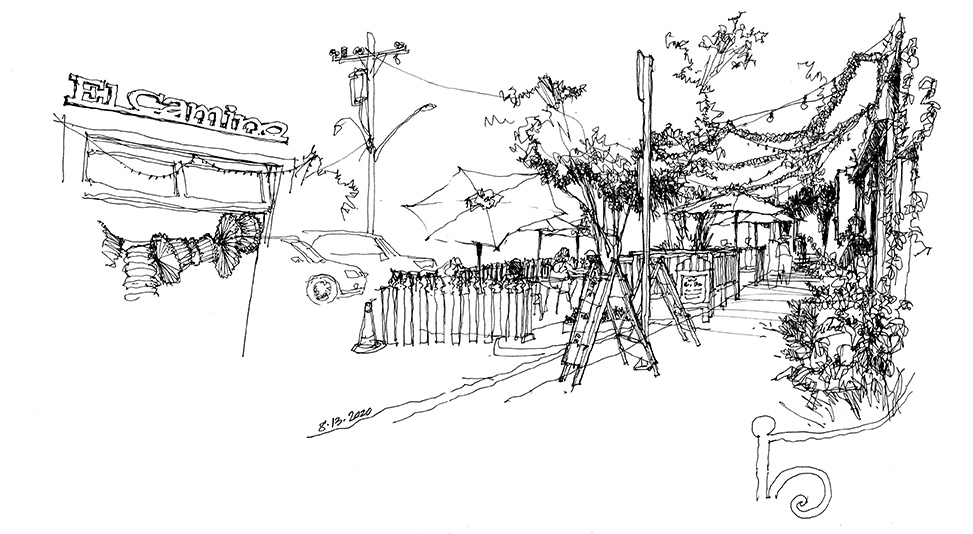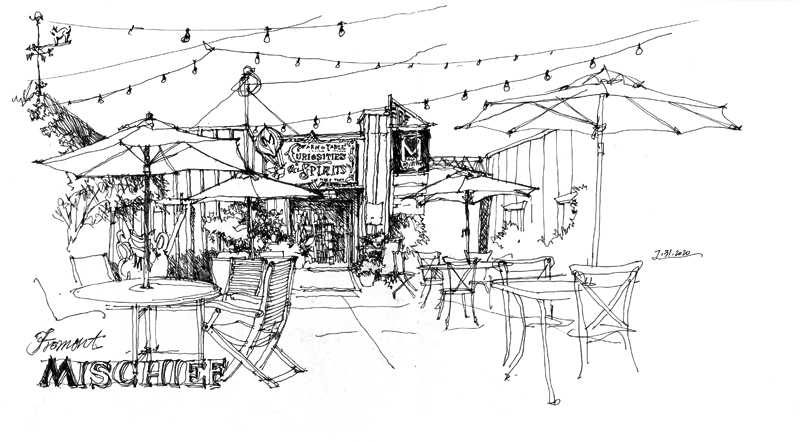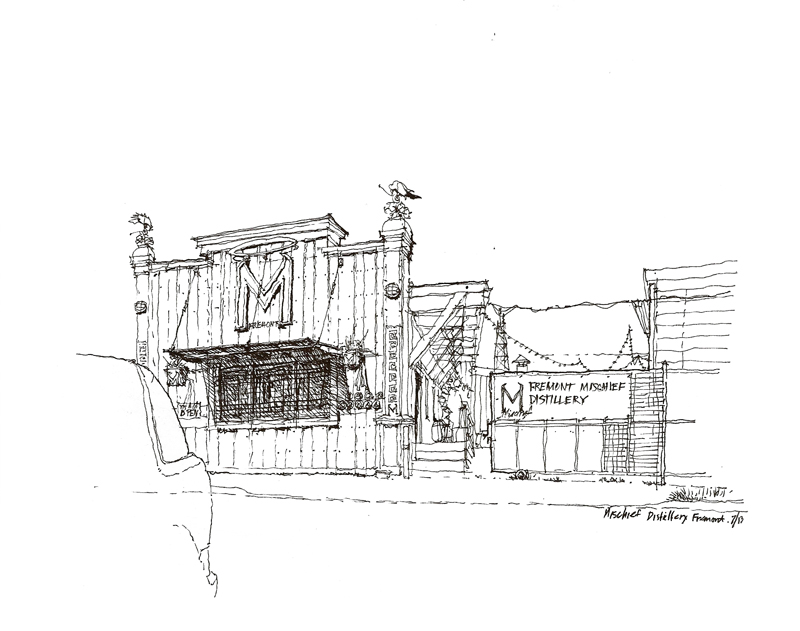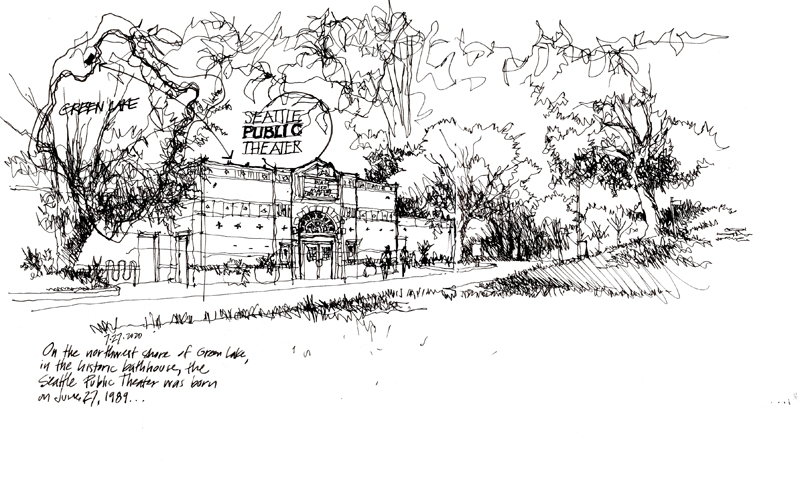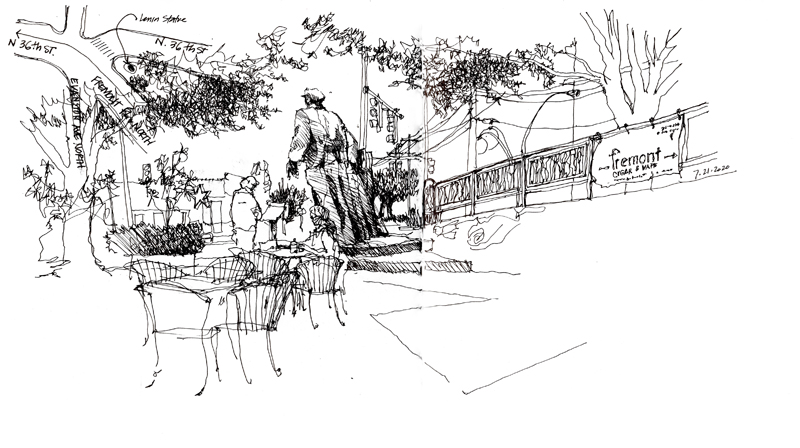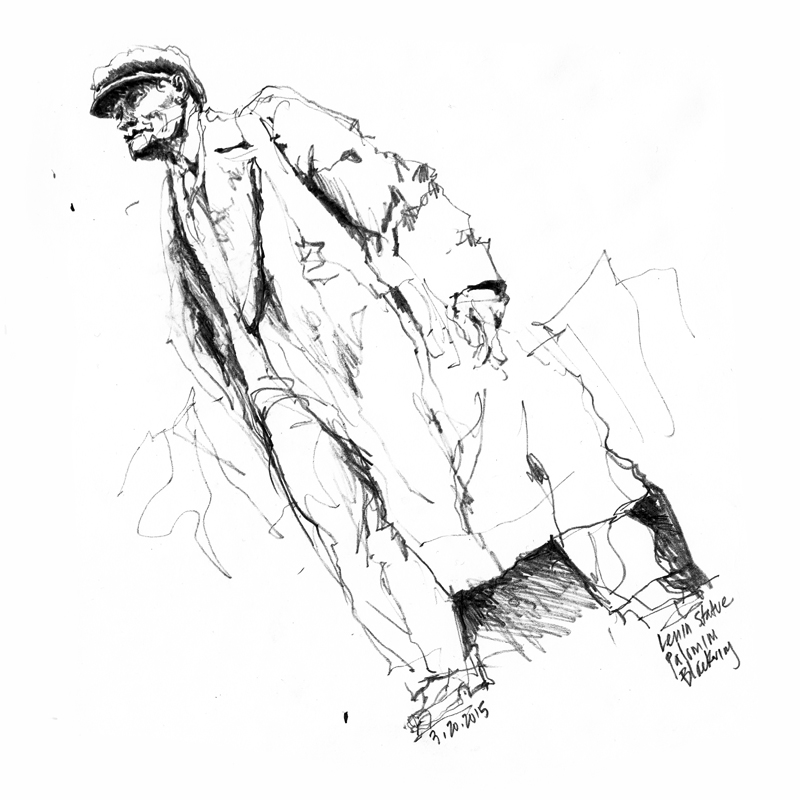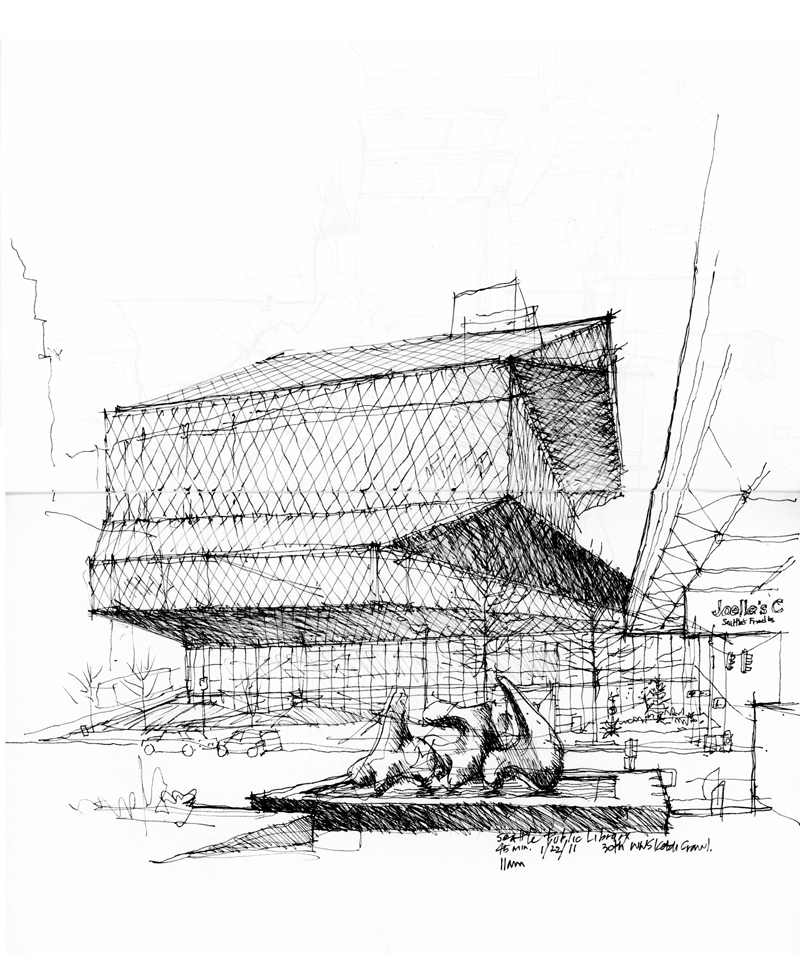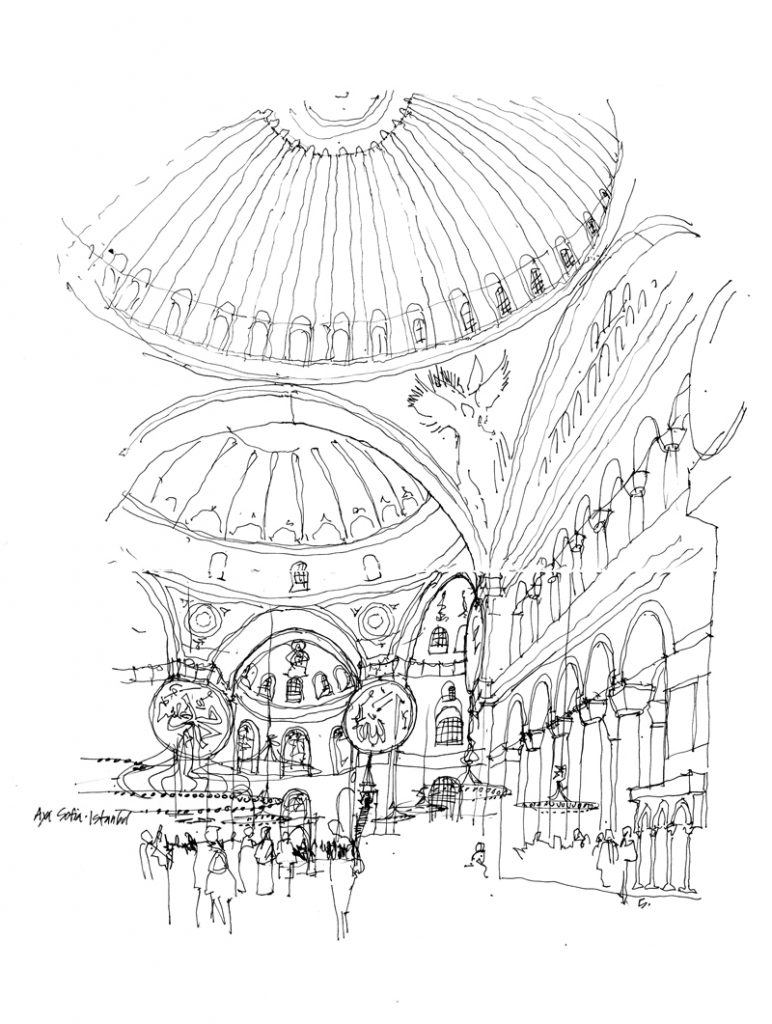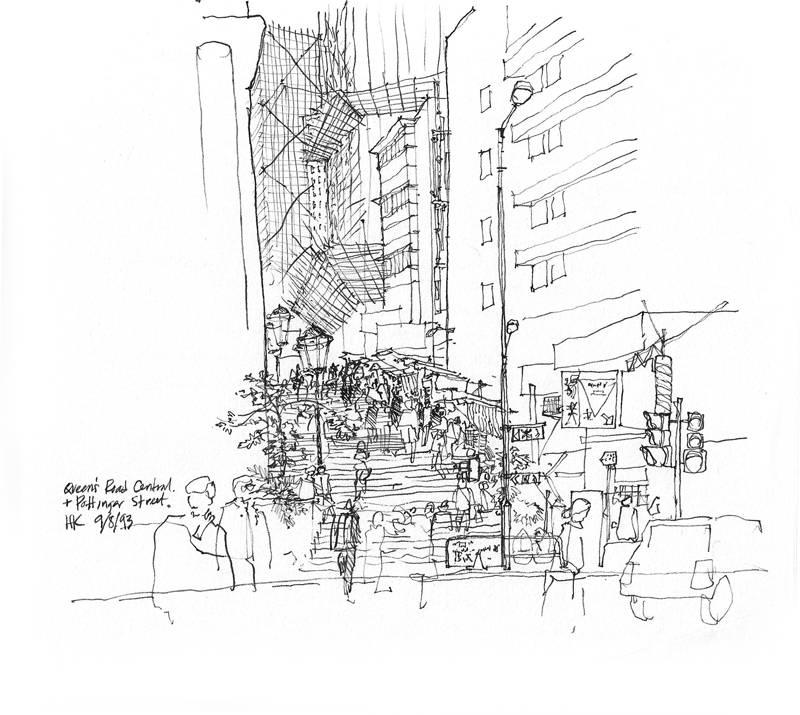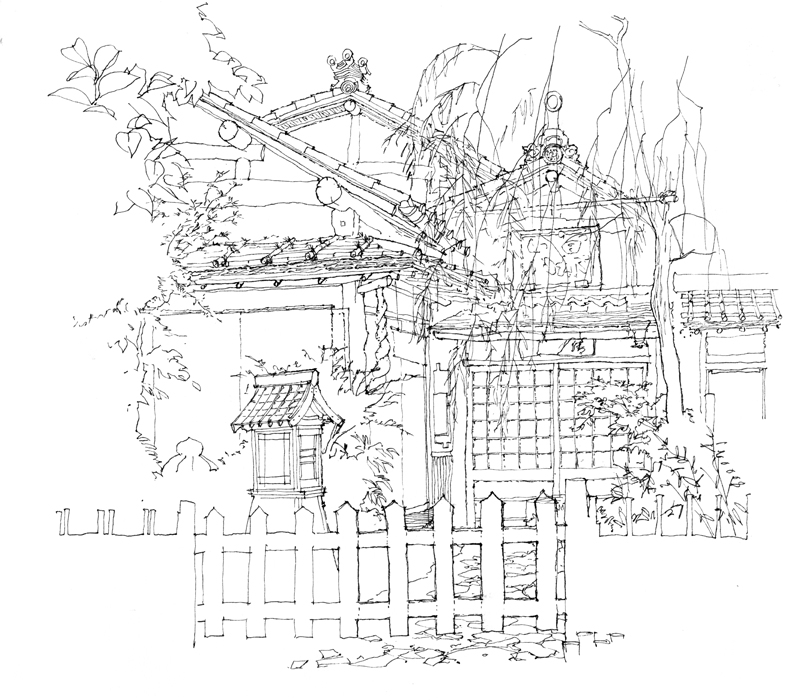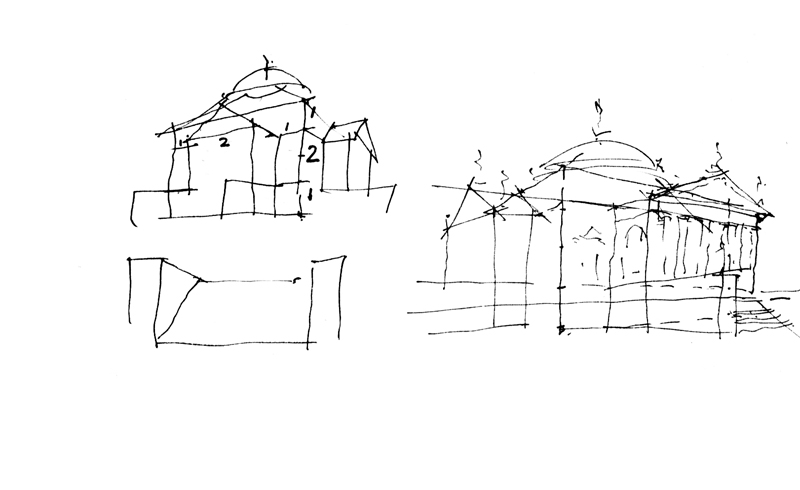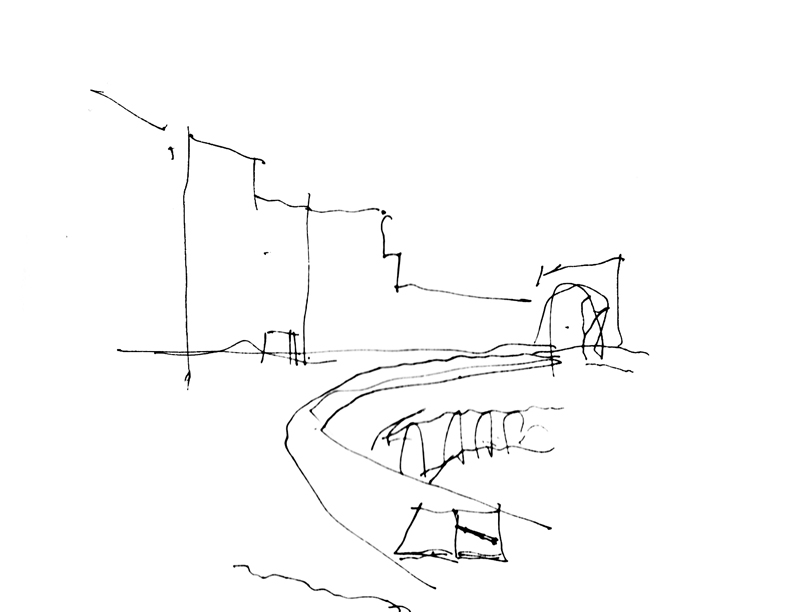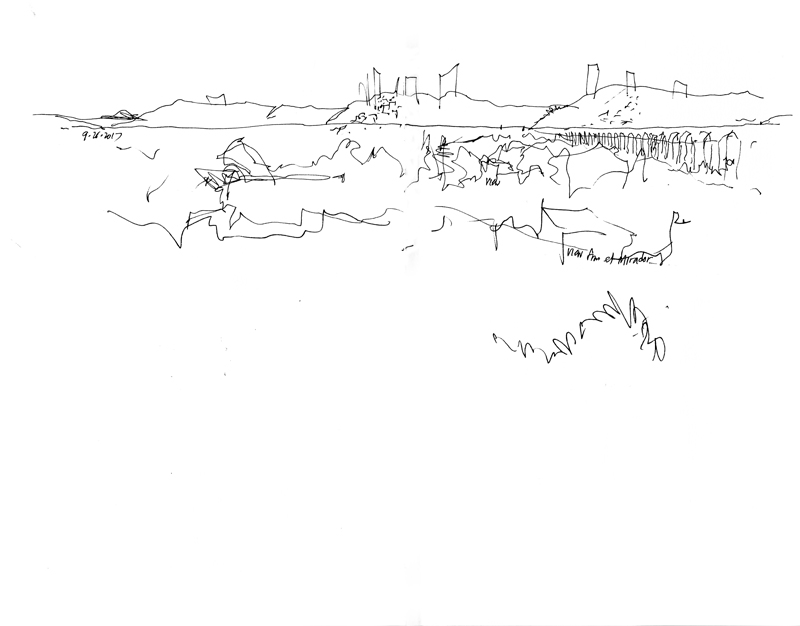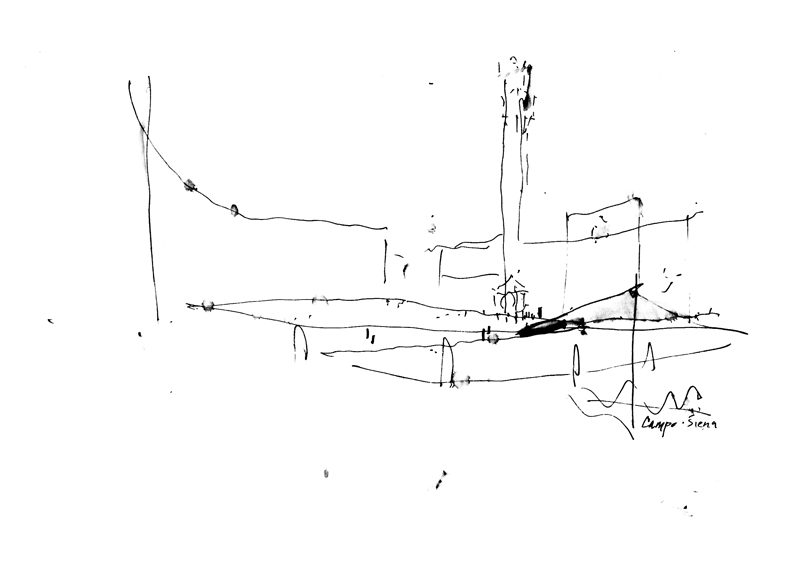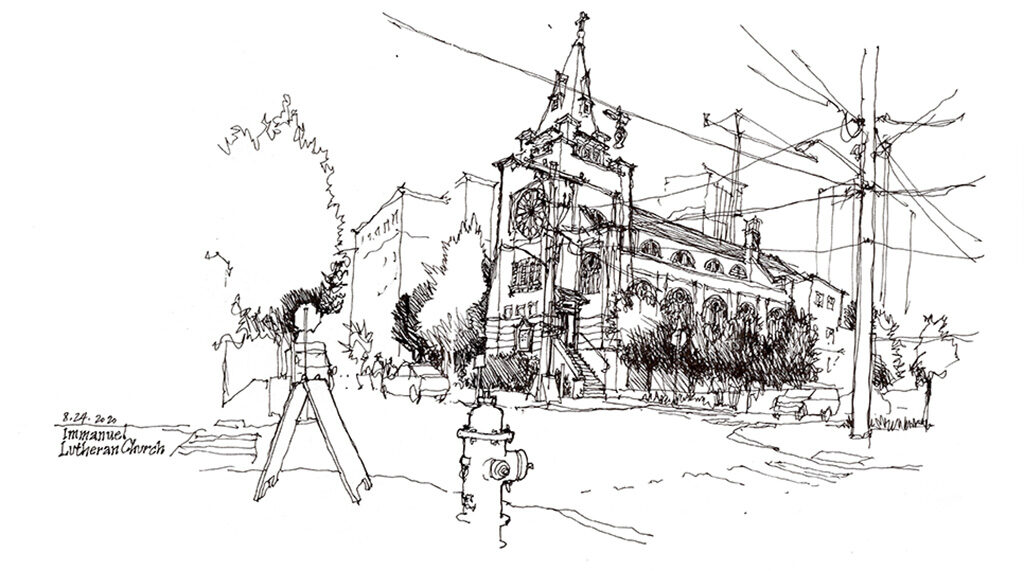
Amid the slew of new office and residential towers being built in the Cascade neighborhood of Seattle stands Immanuel Lutheran Church, at the southeast corner of Pontius Avenue North and Thomas Street. Designed by Aberdeen architect Watson W. Vernon, the church was built in 1907, designated a Seattle landmark in 1981, and added to the National Register of Historic Places in 1982.
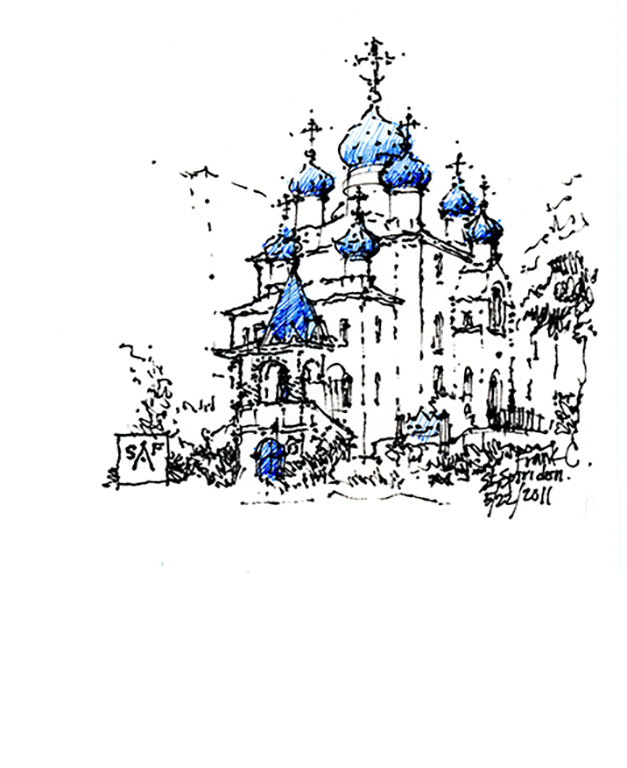
About a block away is another proud structure withstanding the onslaught of new construction, St. Spiridon Orthodox Cathedral. This was drawn back in 2011 as a napkin sketch for an auction benefiting the Seattle Architecture Foundation.

